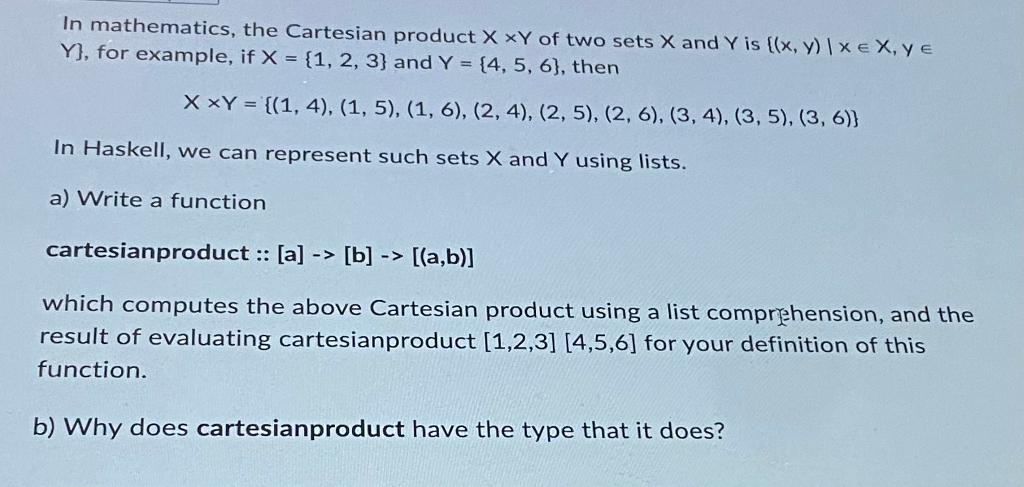Answered step by step
Verified Expert Solution
Question
1 Approved Answer
In mathematics, the Cartesian product XY of two sets X and Y is {(x,y)xX,y Y}, for example, if X={1,2,3} and Y={4,5,6}, then XY={(1,4),(1,5),(1,6),(2,4),(2,5),(2,6),(3,4),(3,5),(3,6)} In Haskell,

Step by Step Solution
There are 3 Steps involved in it
Step: 1

Get Instant Access to Expert-Tailored Solutions
See step-by-step solutions with expert insights and AI powered tools for academic success
Step: 2

Step: 3

Ace Your Homework with AI
Get the answers you need in no time with our AI-driven, step-by-step assistance
Get Started


